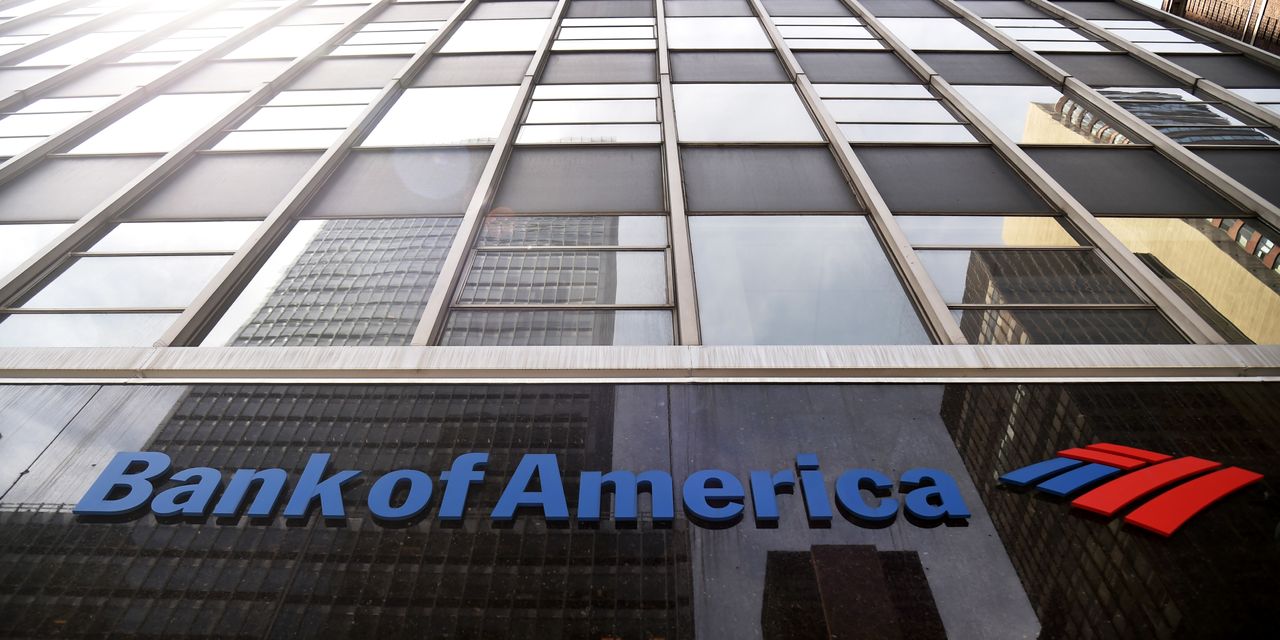Text size

A sign for Bank of America is seen on 3rd Avenue in New York City
HECTOR RETAMAL/AFP/Getty Images
Shares of
Bank of America,
which spent most of 2020 quietly slumbering, have started to show signs of life.
The shares (ticker: BAC) are up 9% so far this year and they are on the verge of moving into a new, higher trading range. The Standard & Poor’s 500 Index, by comparison, is up about 1.4% over the same period.
In 2020, Bank of America’s stock lost about 6% of its value, but that weakness is likely to remain a memory as interest rates are rising and the government seems poised to take even more extraordinary measures to aid the economy.
All of this could be good medicine for banks that loan money for people to buy houses and cars, and for banks that also have trading operations.
The question of how good this improving environment will be shall be answered, in part or in whole, on Jan. 19 when Bank of America reports fourth-quarter earnings. If the recent stock performance is any indication, investors have high hopes.
In anticipation that the market will be encouraged by whatever the bank reports, and especially by any outlook management offers, aggressive investors can bullishly pre-position in the options market.
With the stock recently around $33, investors can sell Bank of America’s March $32 put for $1.42 and buy the March $34 call for $1.40.
The risk reversal—that is selling a put and buying a call with the same expiration but a higher strike price—pays investors a small amount for agreeing to buy the stock at $32, while participating in gains above $34.
If the stock rallies higher, the call will increase in value and the put premium will decline. At $40, for example, the call is worth $6.
During the past 52 weeks, the stock has ranged from $17.95 to $35.67.
Should the stock decline—and it could decline if earnings are bad, the outlook is weak, or something happens to drive the stock market sharply lower—investors will be obligated to buy the stock at $32.
For that reason, do not even consider a trade like this if you are not willing to own the stock. Sure, you could cover the put at a higher price, but the purpose of the risk reversal is generally considered to be that you can get the options market to pay you to buy a stock, while profiting off potential gains.
Some investors will wonder why a march expiration was chosen to cover a January earnings report. Investors usually try to match expirations to events. The March expiration was chosen, rather than a late January expiration, in belief that the bank sector seems to be nearing a sweet spot.
This article is auto-generated by Algorithm Source: www.barrons.com


